Mac Intyre - Hitzaldiko aurkezpena ingelesez
1 like440 views
This document discusses willingness to communicate (WTC), which is defined as the probability that one will choose to initiate communication given the opportunity. It is influenced by both enduring individual differences and situational factors. WTC exists in a state of ambivalence, as the desire to both approach and avoid communication creates competing tendencies. The pyramid model of WTC depicts six layers of influences, from immediate situational factors to more enduring individual characteristics. Language learning occurs as individuals make choices about communication in social contexts over time. Accounting for ambivalence and the convergence of relevant learner variables is important for understanding language use.
1 of 20
Downloaded 19 times

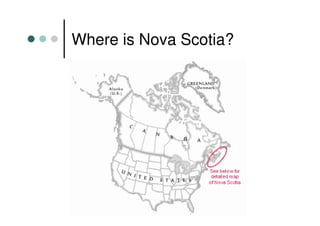
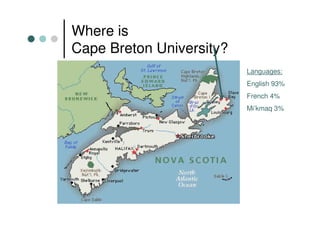
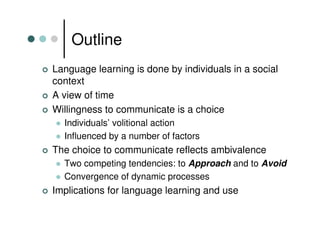
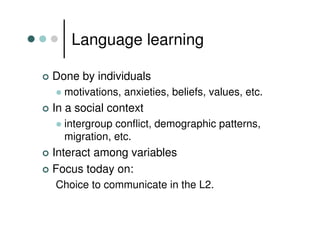
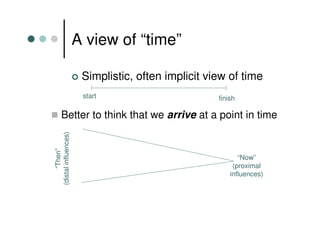
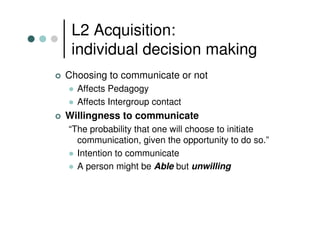
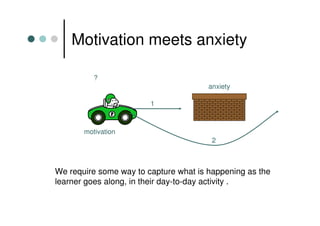
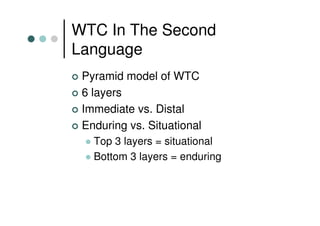
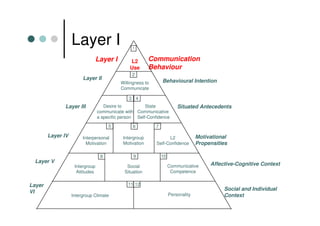
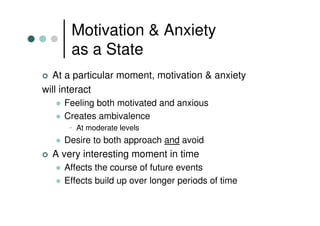
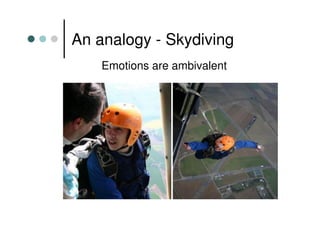
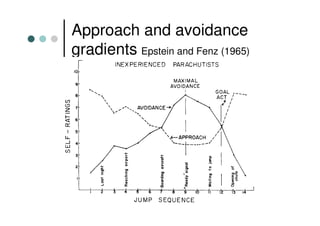
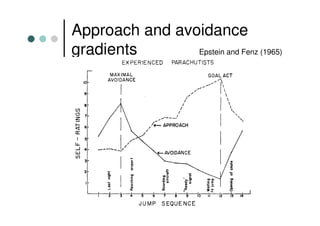
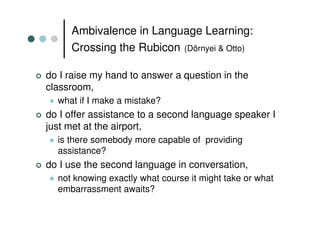
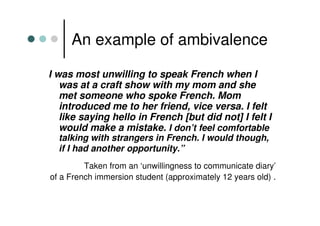
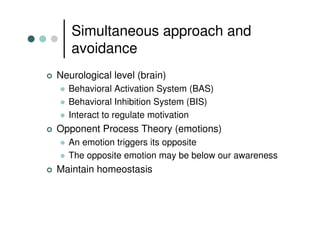
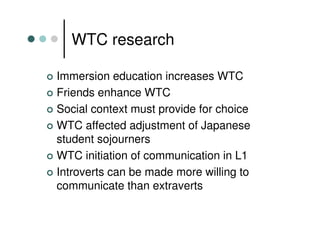
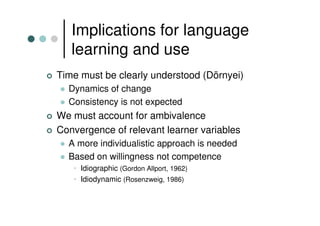
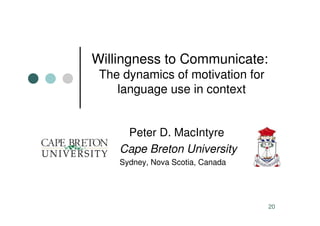
More Related Content
Similar to Mac Intyre - Hitzaldiko aurkezpena ingelesez (20)
More from emun10 (12)
Ad
Recently uploaded (20)
Ad